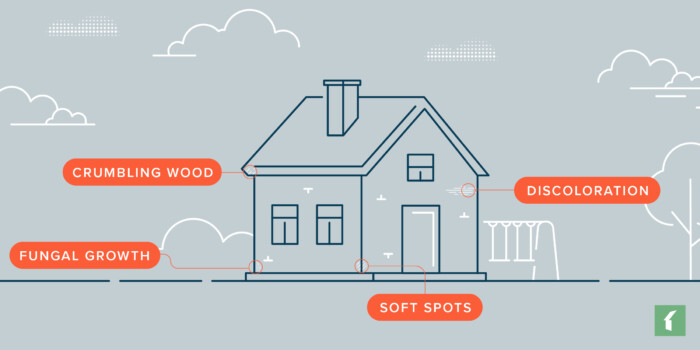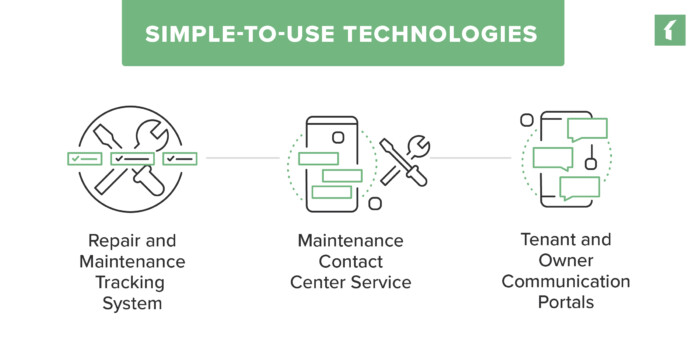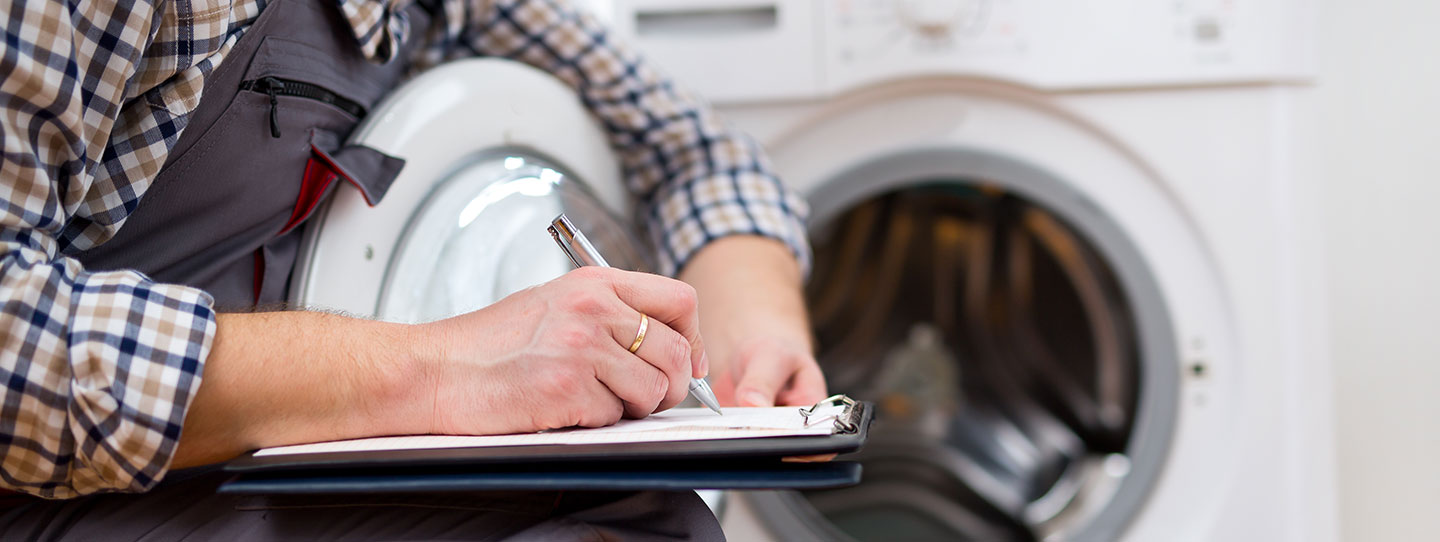Frozen pipes, roof damage, and ice dams are all unpleasant side effects of winter. As the weather gets warmer, property managers need to spring into action to ensure that their properties are in the best shape possible. (See what we did there.)
Automated Maintenance
Track every maintenance request, schedule repairs, and pay vendors all in one place.
Learn MoreEven if your properties haven’t experienced an especially cold winter, you’ll want to use this time to prepare for whatever weather events lies ahead, be those heavy rains, the beginning of drier wildfire-prone months, or tornado season.
Use this home maintenance checklist to prepare your properties for the months ahead, make any repairs caused by the past season, and get ahead of common maintenance issues in the spring and summer.
Download the full Spring Rental Property Maintenance Checklist
Why Spring Rental Property Maintenance Is Important
Every season offers its own challenges. Spring is the perfect time to address regular maintenance and prepare your property for the upcoming warmer weather. Having a thorough spring home maintenance checklist on-hand will help you proactively address any potential problems in the warmer and wetter spring weather.
Of course, if you’ve winterized your property last season, much of this checklist will be a walk in the park.
Building Exteriors
Let’s start with the upkeep and repair of the first thing people see—the exterior of the property. From roofing to the walls, windows, doors, and foundation, your exterior is crucial to preserving not only your property’s curb appeal, but also its structural integrity.
Walk around your property and take note of any glaringly obvious fixes like peeling paint, damaged windows, or any cracking in your masonry. Then start a more thorough inspection that includes these tasks.
1. Inspect the Roof for Damage
High winds can loosen the shingles on your roof, which opens up an unwelcome opportunity for moisture and pests to make their way into the underlying wood sheathing. Thoroughly inspect your roof to avoid unexpected new tenants like raccoons, squirrels, mice, termites, bees, wasps, and carpenter ants.
2. Clear the Gutters
Gutters are responsible for redirecting water away from the foundation of the building, and can easily get clogged by ice, snow, leaves, and dirt. This may cause an overflow that may damage your siding and foundation.
The heavy weight of ice and snow in particular is a common cause for gutter gaps to break. Clear out any debris and check your gutters are free from rust or corrosion. Ensure that they’re also properly aligned and are sloping downwards to properly redirect runoff. Just like roofing, pests and critters can claim the clogged gutters as their homes, which may be costly to fix down the line.
3. Check for Wood Rot
Inspect all your wooden surfaces, like your decks, sidings, foundation posts, and porches for any signs of rot, decay, or insect damage. Here are the most common ways to check for wood rot:

- Look for discoloration in wood, which often looks darkened or has turned from light brown to black.
- Feel for soft spots. If the wood feels spongy when pressure is applied, there may be wood rot. Splits and cracks may also be a sign.
- Identify small mushroom-like growths that may be fungal growth.
- Run your screwdriver or knife along the surface of the wood. If the wood begins to crumble, or is easily penetrable, wood rot may be present.
4. Maintain Your Walls, Steps, Windows, and Sidewalks
Power wash your walls, steps, and sidewalks to remove any leftover grime, dirt, or debris that may have accumulated from sleet or snow. Repair any cracks or damages to the walls, sidewalks, or steps that may have been a result of freezing and thawing during the colder months. Consider painting the exterior if there is any major discoloration from winter precipitation.
5. Recalk Doors and Windows
Gaps in windows are also susceptible to freezing and thawing throughout the winter, potentially causing air leaks. Inspect the caulking around your doors and windows for any gaps, cracks, or signs of leaks and replace any damaged caulking with new caulk or weatherstripping.
This will ultimately reduce heating or air conditioning needed in the warmer months and save you energy and reduce your carbon footprint. It also doubles as a great opportunity to check and replace your window screens as necessary.
If you’re in a tornado-prone area, consider investing in storm shutters and impact-resistant windows and doors, including garage doors, which are a common weak spot in a property’s defense against tornadoes.
6. The Final Walkthrough
Take a look at your outdoor furniture that may not have been put away. Replace any dead light bulbs in your backyard and check on any CCTVs you may have on the premises. Pay attention to the lawn and trim any bushes or trees that are hanging over your home and may damage your property. Lastly, remove any fallen branches or debris that may have not been removed yet.
Note: If your property is in a tornado or fire-prone area, take extra care to clear your exteriors of any hazardous debris, overgrowth or other material. Be sure to fasten down any heavier outdoor furniture that can pose an additional risk in high winds.
Building Interiors
Now let’s take things inside. It’s important to conduct regular checks in the interior to improve or maintain good air quality, save energy, increase safety, and extend the lifespan of your appliances.
1. Filters and Air Units
A great place to start is by vacuuming or replacing air filters in your heating and cooling systems to ensure optimal air quality during the warmer months. Inspect the coils in the back of the fridge and wash or replace the fume hood in the kitchen. These are susceptible to being clogged up over time. Check on your A/C units that have been stored away during the winter and ensure they’re in good working order. This is also the perfect time to inspect your furnace filter and replace it if needed.
2. Spray for Pests
Checking for pests should be a year-round practice, but since they’re more likely to come out of hibernation and reproduce in warmer months, take extra care when looking for signs of any uninvited guests.
Hire a pro to come in and spray for ants, spiders, and other seasonal pests. Look for cracks and spaces where pests could get in and seal them. Check your home’s basements, attics, crawl spaces, and areas with water sources like kitchens and bathrooms.
To save time and ensure you’re not missing any red flags, hire a professional you trust to conduct a thorough inspection and treat the property to address the issue swiftly.
3. Scope Out Plumbing Problems
Proactively preventing any plumbing problems will save you a fortune on serious repairs. A sudden change in temperature is a leading cause for irrigation problems, so start by checking the water and drain lines and look for signs of corrosion. Check water lines under the sink in the kitchen and make sure there’s no discoloration. When inspecting any plumbing section, be sure to check pipes and hoses for cracks that indicate an impeding issue.
Turn on all your faucets and make sure the water temperatures, pressure, and drainage are suitable. Test the pressure with a pressure gauge if the pressure seems too low or too high, which may reveal potential clogging or pipe damage.
Hot water tanks are susceptible to sediment build up as well. Drain the sediment and reset temperature gauges as needed to improve the longevity of your water heater.
4. Check Smoke and Carbon Monoxide Detectors
Your checklist should also include checking your smoke and carbon monoxide detectors to confirm they are functioning correctly. Test the button on each detector to ensure the alarm sounds and check and replace the batteries (this should be done yearly, even if they haven’t expired). Have backup batteries on hand for detectors that are hardwired into your home’s electrical system.
You should also check the exterior of each detector for any visible signs of damage or obstruction that could impair its function. You can even use a vacuum cleaner’s soft brush attachment to gently remove dust from the smoke detector’s exterior vents. Dust can prevent the detector from working correctly.
Prepare for Wildfire Season
If your property is in a high fire hazard severity zone, your local fire department may conduct an inspection of your property for hazards before fire season begins. As an additional safeguard, have insurance in place along with vendor contracts prepped in the event of any fire-related damages.
This is also a great opportunity to clear dead trees and bushes and keep tree branches away from roofs of buildings. Keep lawns hydrated and, if you haven’t already, consider updating outdoor spaces with fire-resistant landscaping.
Double check all the fire alarms are working properly and that fire extinguishers haven’t been tampered with. Most importantly, stay informed and monitor local fire conditions to understand what to do in case of an emergency. That includes having an emergency plan in place and keeping your residents informed of important processes and resources in the event of a fire. For more information, read our wildfire preparation guide for property managers.
Let Your Residents Be Your Watchful Eyes
The best way to stay on top of property maintenance is to engage with your residents to identify any potential issues as they occur. Having an open and direct line of communication with them will help you avoid any surprising headaches or setbacks during an inspection.
As you prepare your tenants for tornado and wildfire season, having a reliable, accessible, and instantaneous way to share crucial safety protocols and other information is an absolute must.
One of the best ways to improve communication with your tenants is to leverage these simple-to-use technologies to make it easy to communicate and keep your work orders organized.

Repair and Maintenance Tracking System
Maintenance tracking software enables residents, owners, and employees to submit work orders, upload videos, and documents to request work orders. It will also allow you to schedule recurring items, including this maintenance checklist so your vendors can stay on top of regular check-ups.
Automated workflows and automatic troubleshooting through apps like Property Meld can help you reduce maintenance times and free up your staff for other tasks.
Maintenance Contact Center Service
A Maintenance Contact Center can also help service and manage requests at all times – even when you’re asleep. It’ll help you keep up with the flow of your incoming maintenance calls, give your residents access to every ticket in real-time, and provide highly trained support to help resolve issues.
Tenant and Owner Communication Portals
Above all, a resident portal makes it easy to stay in sync with your residents and stay on top of your property maintenance. This is the ideal place to post alerts for any upcoming inspections, important safety protocols for seasonal or weather-related risks, and keep your tenants informed of upcoming work.
In an all-in-one portal, residents can track maintenance requests, send text and email updates, and ultimately have a two-way record of any ongoing issues that may arise. You can send out updates to entire communities and HOAs or keep individual tenants informed with the same level of ease.
Download the full Spring Rental Property Maintenance Checklist
Buildium is a comprehensive property management software that includes all the maintenance features above to help you take care of your properties year-round. To get started, try Buildium for free with a free 14-day trial. Sign-ups only take 30 seconds with no credit card required.
Read more on Maintenance

